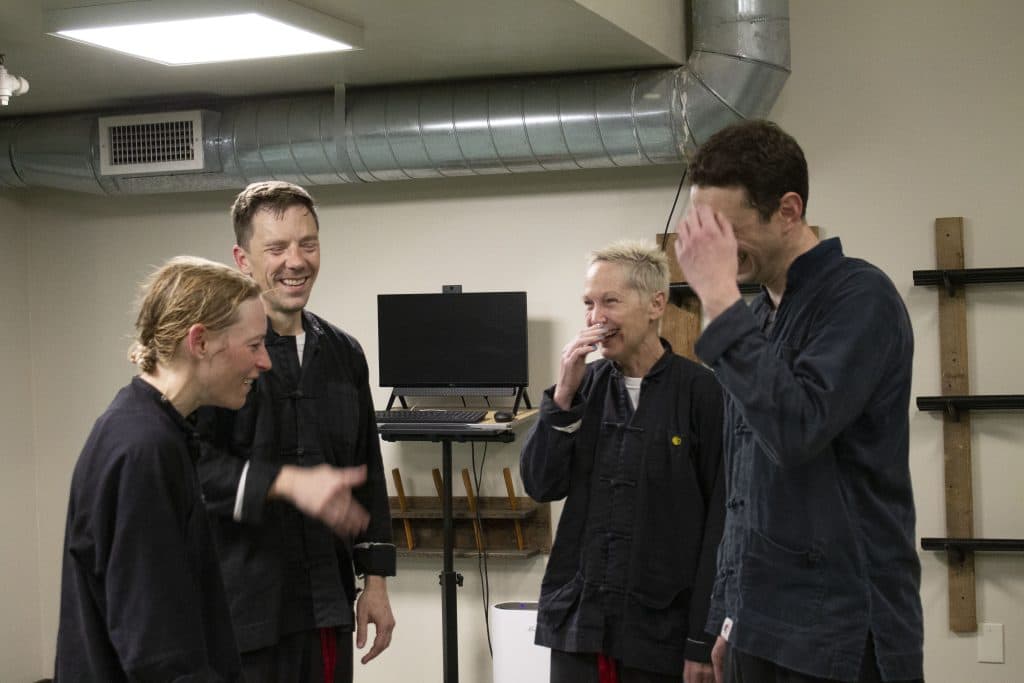 Since the Kohnens tested for their black sash two weeks ago the dojo has been buzzing with excitement. I’ve had lots of questions about what it means to be a black sash or black belt and yesterday got a familiar question about what the colors mean. I explained that the symbolism of a sash or belt getting darker in color is like getting more experience in martial arts.
Since the Kohnens tested for their black sash two weeks ago the dojo has been buzzing with excitement. I’ve had lots of questions about what it means to be a black sash or black belt and yesterday got a familiar question about what the colors mean. I explained that the symbolism of a sash or belt getting darker in color is like getting more experience in martial arts.
If you start with a white sash and practice hard and sweat, it will eventually turn yellow. The more you practice and the more experience you get, the darker your sash will become until it eventually becomes black. Eventually, the sash will tear. I remember when my Sifu went to tie his black sash one day, it was so old and tattered that it just tore in half. He decided to stop wearing a sash then and there, stepping back onto the mats like a sashless beginner. While a sash tears, something different happens with a black belt.
As those of you in Brazilian Jiu Jitsu have noticed, I recently got my black belt from Master Roger Machado after practicing BJJ for 15 years. If you see my belt you’ll notice it’s brand new, crisp and clean. As I practice longer and longer, the belt will start to wear and tear. I’ve even seen some black belts that have been worn for decades start to do something very cool. The outer layer of black dyed fabric starts to fall off, revealing a white belt underneath. We like to say the symbolism behind this is that even a black belt should think like a beginner. We should all have a beginner’s mind.
When I teach class, I make sure to teach plenty of basics. As my Sifu says, an advanced technique is a basic that has been mastered. Yet when I begin to explain the details of a reverse punch for the 10,000th time, some students in class may start to drift away, their thoughts traveling to something more novel like planning what they’ll eat for dinner. It is difficult to stay totally focused on something we’ve heard so many times before. Yet this ability to stay focused on what may seem mundane is at the core of our practice. Meditation teaches us the same thing. What could be more mundane than breathing? We practice bringing our attention back to the present, moment by moment.
This is crucial for two reasons. One, it brings us fully and mindfully into the moment rather than just letting life pass us by. Two, it opens us up to the possibility of actually learning something. As soon as we tell ourselves, I already know how to do a reverse punch, we shut down our ability to improve. We must always empty our cup and be ready to take in new details. I find that even after 25 years of practice, there is always something more to learn. Martial Arts is a mountain without a top that we can keep climbing forever. We may “finish” learning a form in Tai Chi, but there are nearly infinite details to refine. Just watch someone who has been practicing a form for 10 years next to someone who just finished learning it. You’ll see a difference.
The most crucial step is to take this beginner’s mind into everyday life. We practice beginner’s mind in martial arts so that we can have it outside the dojo. This allows us to be totally present for ourselves, our friends and family. It also compels us to continue learning and improving, ever reaching towards our highest self.

Leave A Comment